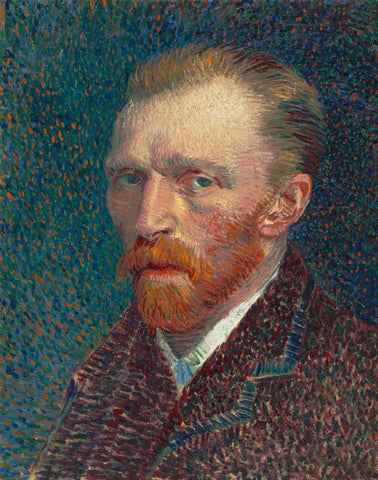I recently confessed my nerdiness about loving a good brush stroke and my (reformed) envy of Frank Stella’s ability to paint straight lines. Many artists probably understand this obsession, but let me clarify for those uncertain of my sanity!
Anatomy of a Brush Stroke
A brushstroke is a combination of how the paint is applied, which includes:
- The mechanics of the hand and arm in motion.
- The type and quality of the brush being used.
- Paint type and its’ fluidity.
- Type of surface on which the paint is being applied.
The topic of brushes, paints and paint surfaces can be lengthy topics, but as they are not the main focus, I will touch on them.
- Several brush types are available, but the main shapes are rounds, flats, filberts, angles, and fans. The bristles come in natural or synthetic brushes, and you select the bristles type based on the medium. I prefer synthetic angle and round brushes. Synthetic brushes are cheaper and suitable for acrylics, plus I’m rough on brushes. Additionally, I have a cat who likes to eat the bristles!
- As to painting in recent years, I have been using acrylic. I like its quick drying time. It easily permits mixed media, which I indulge in occasionally. I use heavy-body paints, but I don’t mix them to the point of being overly fluid.
- My habit is to mix an abundance of paint in advance, add a drying retarder, then put the paint in air-tight containers. When I am done painting for the day, the paint containers end up in a large plastic bag in my refrigerator. Keeping the paint cool keeps it workable, usually for about a month. You never know what you will find in my refrigerator!
- Regarding surfaces, I prefer canvas but occasionally use an illustration board, especially if the work becomes mixed media. When pressing a paintbrush on its surface, canvas has a little more give than an illustration board, and I like that give.
In summary, all of those elements come into play when creating brushstrokes.
Brush Strokes I Love!
Artists whose brush strokes I admire are many, but here is the Readers Digest!
John Singer-Sargent, 1856 – 1925, was a prolific portrait painter famous for the Portrait of Madame X.

When standing back from many of his paintings, you are deceived into thinking there is a lack of noticeable brush strokes. But on closer inspection, you get the beauty and wonder of Singer-Sargent’s brushwork. He makes painting look so easy, and his forms pull together beautifully. Below is Singer-Sargent’s painting, Portrait of a Boy, 1890, from the Carnegie Museum of Art in Pittsburgh, PA.

Notice how the brushstrokes of red paint wrap around the foot of the boy. It seems like a causal afterthought, but don’t be deceived; it is brilliant! Nothing is left to chance in a Singer-Sargent painting.

I will briefly mention Vincent Van Gogh, my first love affair with a painting! Sadly, he has been so commercialized in recent years that I cringe, but that is for another email. You are missing a treat if you have only seen his work as a projection or photo and not in person. His ability to create whole images from marks and lines still gives me chills, and he still profoundly influences my artwork.

I have a long-standing admiration for the Abstract Expressionists Jackson Pollack, Willem de Kooning, and Marc Rothko, to name a few. The artwork I did in the 90s reflected that love of the Abstract Expressionists, yet I never really mastered the beautiful gestural brush movement common to that genre. On a side note, I feel a lot of graffiti is similar to Abstract Expression in its’ raw brushstroke and energy.

The Art Institute of Chicago owns the mammoth painting (6’75” x 8’33”) by Dutch painter Willem De Kooning, 1904-1997, named Excavation. Not only does it envelop you by size, but the energy of its’ colors and brushstrokes also sucks you in! De Kooning, like Jackson Pollock, is an Action Painter, and I adore their spontaneous paint application.

And Then There is Stella!
I even envy the artists who never leave a stroke mark, like Frank Stella (born 1936)! I have already written about this, but I had to add, yes, I’m complicated!

I’ve accepted that my hand will paint as it was intended to. I have accepted that I can’t seem to let myself load up a brush with paint like an Abstract Expressionist or graffiti artist! Whenever I try, I find later that I am brushing out the expressive lines! I guess it wasn’t meant to be, in me, that is!
The beauty of aging as an artist is accepting who you are and losing your doubt. I am grateful to be at that stage in my painting career.

